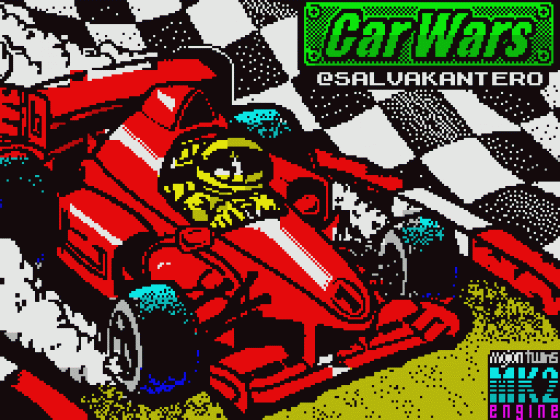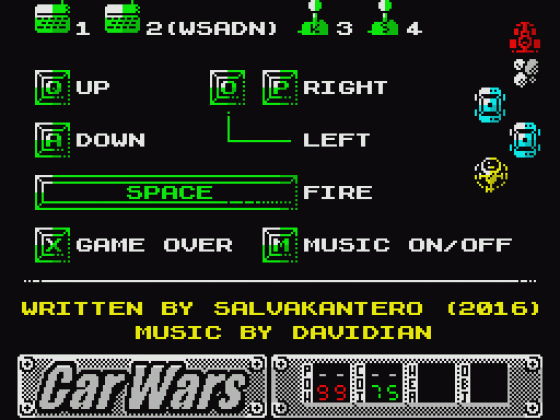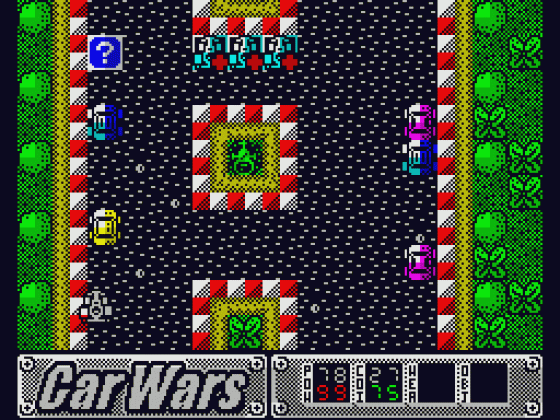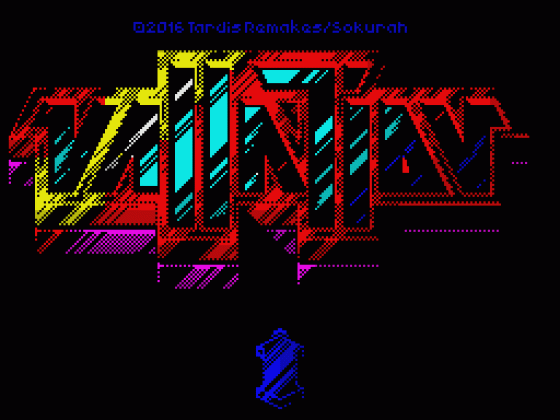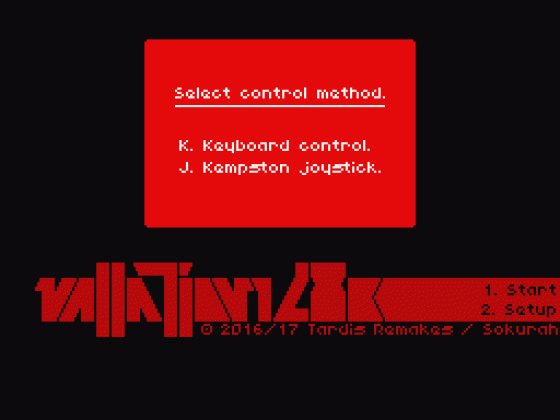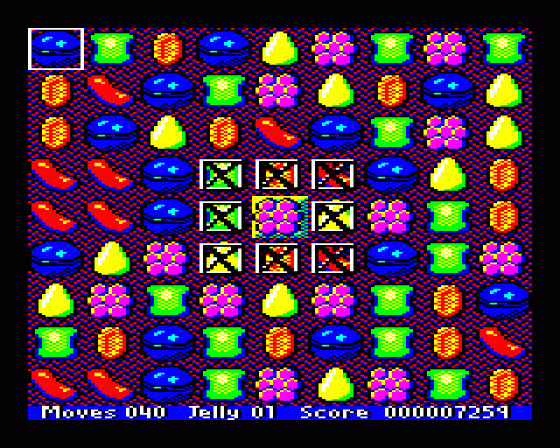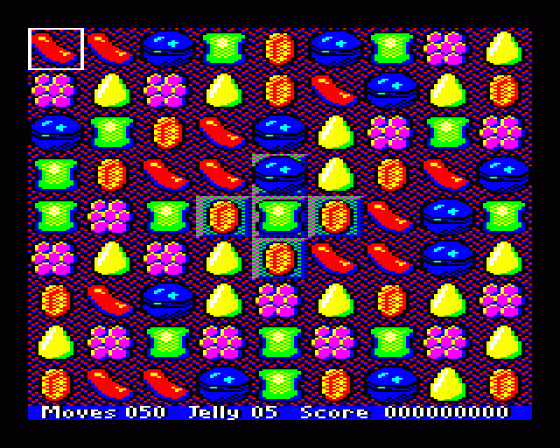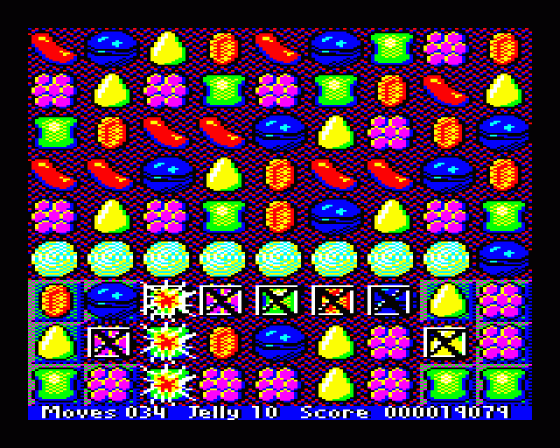
Micro Mart
 6th October 2016
6th October 2016
Dave Edwards picks up a Russian first-person shooter, a Spanish car-driving adventure and a Cybernoid clone for the Spectrum and discovers the most addictive game ever released for the BBC Master in this issue's Retro Round-Up
Welcome
Welcome to the Retro Round-Up where, after the last article's catch-up on all things retro-book-related, I once again return to the familiar ground of games. And there have been a lot of them over the last month!
A reader recently asked me how I choose the games (or indeed last issue, books) for inclusion in each article (particularly in light of the fact that publishers are currently churning out retro games at the rate of about two per day). The answer is that I usually become aware of them in much the same way as I introduce them through this article. The man behind Retro Revisited (http://tinyurl.com/zkg9wok) has a monthly round-up of all the games he's seen; the man behind Indie Retro News (www.indieretronews.com) has a daily feed of previews and discoveries he's seen and the forum posts of World Of Spectrum and Stairway To Hell tend to fill in the blanks. I'm naturally drawn more to the new games released either for the systems I have played with, games which appear to be a superior technical feat of programming or games that are based on movies that I have watched.
The great news is that, after nearly two years, more and more retro programmers are now aware of these articles. That means I also get the odd nudge via Everygamegoing's Facebook page to review a particular new retro game which, of course, increases its exposure. (At least it does if I like it!) The even better news is that, by the time you read this, I will have added the functionality to the site itself to allow you to request any review of any game ever written, so if you would like to see your new retro game featured in Micro Mart, making a request for it will be only a few clicks away...
This issue we have a nice selection of very different games, all of which were released in July 2016, a month that seemingly produced over 100 new, fully-released games given away by publishers for free and on machines that most people would assume belonged in museums. Let's go...
Car Wars (El Mundo Del Spectrum, Spectrum 128K, Free)
Car Wars is a new game for the 128K Spectrum, in both English and Spanish, published by Davidian of El Mundo del Spectrum (Not to be confused with World Of Spectrum!). It's completely free and introduces itself as "a motor race where you take charge of a car to rival the Formula 1. Overcome each exacting stages – designed to test the patience of the fastest drivers - to win the mayor's bounty".
Given its name (Car Wars, in case you'd forgotten!) and the above premise, it is not unreasonable to assume the game is an overhead Micro Machines clone. The trouble is, it's not; it's yet another graphic adventure built with The Mojon Twins' La Churrera engine and I've now reviewed so many of these clones - many right here in Retro Round Up! - that my overwhelming feeling on realising it was "just another Churrera clone" was disappointment.
Chalk through that nonsense about motor racing and the real premise of the game is to drive around a flick-screen overhead maze collecting coins to acquire a weapon. There are other cars, yes, but they are of the "patrolling nasties" type - they remain imprisoned on their own screens. As usual with La Churrera games, you have the patrolling nasties that mill about and the patrolling nasties that home-in on you. Here, the second type are helicopters.
When you've collected enough coins to visit the garage, your vehicle is equipped with a weapon, and you complete the stage by retracing your steps through all of the previous flick-screens getting close enough to a patrolling nasty car to press Space, deploy the weapon and send the car to that great scrapyard in the sky.
If I sound extremely unenthusiastic about this, it's only because I'm still reeling from the misrepresentation of the game as one thing when it's another. Certainly, if you like overhead maze games, you won't find anything wrong with Car Wars - it has good graphics, a bouncy little tune, smoothly moving sprites and a rather nice "tutorial" stage one more commonly associated with modern titles than retro ones. How to playing the game is explained by a series of "?" icons which, when driven over, give you important information what you have to do. Despite the author being Spanish, the information is in perfect English too.
Unfortunately, with a few notable exceptions (Red Planet, reviewed MM #1386), I have always found La Churrera games fiddly with sprites that are difficult to control. Car Wars is no exception and, although you might like it, I'm afraid I didn't.
Vallation (Spectrum 48K/128K, Tardis Remakes, Free)
Soren Borgquist of Tardis Remakes has a small but quite impressive portfolio of games under his belt. He wrote The Speccies, which was released on physical cassette in 2013 and now commands quite a high second-hand price (probably because it's a hard-to-find-but-very-good game). He's now back with Vallation, a port to the Spectrum of a relatively new shooter for the Commodore 64.
There's no complicated back-story or misleading blurb here - Vallation is an arcade game written in pure machine code. You take control of a small spaceship and your aim is to cross 101 rooms without using emulator save states (Yes, you people know who you are!). Spectrum games players around in the Eighties may well remember Cybernoid, and Vallation is the same sort of idea. Each room is a challenge and can be tackled a few different ways. It is not, for example, necessary to kill all the enemy robots patrolling it because all the game demands is that you cross it. However, some of the enemies can fire bullets at you so some players may prefer to take these ones out of the picture before attempting to cross the room. Other players may instead they can accurately time when a robot will fire at them and instead opt for a kamikaze charge over its head.
I am not sure exactly why but some parts of Vallation feel very much like a "fairer" version of Rick Dangerous. If you're not familiar with Rick Dangerous, it was a platform game that invited you to cross rooms without Rick being impaled by hidden spikes, lasers which burst forth from walls or patrolling natives. The difference, apart from Rick being a platform game and Vallation being a shooter, is that Vallation's killing-machine equivalents are not concealed. The rockets, which pepper each wall and burst into life when your ship gets too close, hang there like hunting trophies, forcing you to tiptoe as close to them as you can and then beat a hasty retreat when your pixel crosses a boundary with theirs. This is much less unjust, and Vallation never feels unfair. Put in the practice and you'll win it, although it won't be easy.
When you've crossed a room, you move to the next one. There's no going back. Not that you need to.
Everything about Vallation handles very well. The graphics are well-designed, move smoothly and react accurately to controls. There's gravity, which means you must hold down the Up game control to make your spacecraft "hover" (a nice stream of pixels is emitted to show thrust). And there's a lot of colour but no colour clash (always a worry in colourful Speccy games).
The only real criticism, if indeed it even is one, is that Vallation's concept feels dated. Whilst The Speccies felt like a brand new concept on the little rubber-keyed beauty, Vallation feels like a game which was actually released in 1985/6. If it had indeed been released then however, we would have all been playing it - because it's great. There is some foxy music when it starts up too.
The Dark (Spectrum 48K/128K, Oleg Origin, Free)
Hands up, all of you who like those games where you wander around a 3D landscape with your gun trained in front of you and try to solve puzzles that get you into hitherto locked areas? Yes, The Dark is a First Person Shooter on the humble Spectrum 48K. The (mercifully short) backstory goes that you are a warrior who has decided to reclaim his mother's land from the "dark forces". It's written by Russian Oleg Origin who also wrote the love-it-or-loathe-it Metal Man Reloaded, also for the Spectrum.
The game starts with a prologue which shows four hand-drawn pictures whilst telling the backstory with sampled speech. The speech sounds, for the most part, like gobbledygook, serving only to remind us it's a bad idea to include it. Fortunately, it's over very quickly and the epic, ground-breaking feat of technical excellence that is The Dark begins...
First Person Shooters are really nothing without aesthetics. Whether it's the early blocky caverns of Castle Wolfenstein or Doom or the snow-covered landscapes of Goldeneye, you need some aesthetic appreciation of where you are and how your body relates to the surroundings to effectively weave in and out of the obstacles in your path and make headway. Sadly, the Spectrum is a very limited machine in such a respect. To keep everything flowing at a reasonable speed, you can't fill its memory up with different sizes of sprites, so the monsters of The Dark can't come lumbering towards you out of the dark, or from a distance. Instead, they just "appear" in front of you.
Backgrounds also can't really feature much in the way of texture as again, this would be too memory-intensive, so instead we get drab, washed out walls of blue or yellow that divide up the 3D maze. Move about and the effects are reasonable; the wall shifting its perspective realistically in proportion to the angle at which you are now looking at it. That's good but unfortunately The Dark only has five movement controls - left, right, forward, backward and fire (or poke with trident). There's no sidestep left or sidestep right key, so to move left or right actually means turning left or right and then moving forwards. To say the least, this is tedious, especially when one of the game's monsters barrels down upon you. You end up backing away and firing furiously at it - but you can quite easily end up backed up into a corner with nothing to do but pray.
There are also odd effects that render The Dark more difficult to play than you would expect. A periodic aim is to collect the keys which hang on the walls, and a typical level involves fighting your way through the monsters and heading down a long foreboding corridor where a key hangs on the wall that represents the dead end. If you approach the wall whilst in the centre of the corridor, the key remains visible. Come at it from a different angle and the key may well appear and disappear with each footstep you take toward it because the perspective of the tilted wall obscures the item.
Enemies, on the contrary, appear in black 'blocks' which obscure any walls behind them!
There are some aesthetics of The Dark that do work well though. When under attack your vision turns blood-red. When you start the game, you don't actually have a gun and the game makes you work to find it. You will also intuitively reference the status bar at the bottom and the map at the top (called up with the Space bar) without realising. The sound of your footsteps is a nice touch, and the scale of notes which accompanies the appearance of a monster manages to jar even though it's quite a simple effect.
As with Metal Max Reloaded, The Dark is hard. Very hard. The monsters will quickly pick you off unless you kill them or run away very fast and, if they don't, the lack of being able to understand what to do and where to go to escape from a seemingly closed-up maze might well see you reaching for the reset button before too long. I did.
But let's get one thing straight. The Dark is an immense technical achievement on the 48K Spectrum. There's no denying that. It may struggle with the limitations of the hardware of the machine, but when you consider how varied and complex the calculations have to be to generate a realistic First Person perspective in 48K, you realise that it's both amazing and it will likely stand almost alone in such a genre for that machine.
The trouble is that playing The Dark isn't the pleasure you might imagine, because the aesthetic faults are likely the very reasons why other publishers never even attempted such a feat of programming. Due to their different architecture, computers like the Commodore 64 could handle a 3D maze-based First Person Shooter gracefully (yes, even in 1984/5, look at Way Out. The Spectrum could not - and it probably never will. The Dark is probably the best First Person Shooter it is ever going to see.
Whether you consider it's worth taking on the dark forces inside your Spectrum really depends on whether you see the existence of a First Person Shooter for the Speccy as worthy of being played in its own right... or as a game that you want to win. By all means, download it if you fall into the first category. But if you fall into the second category, to quote Pierre Bosquet, "C'est magnifique, mais ce n'est pas la guerre: c'est de la folie." (That's "It's amazing, but it's not war, it's madness," to non-French speakers.)
Sugar Smash (CRTC, BBC Master 128, Free): Retro Find Of The Month
Anyone who has even a passing acquaintance with iPhones, consoles or even pub quiz machines has likely come across either Candy Crush or Bejewelled. Both are simple, grid-based games, where you are given a grid of icons and must create lines of three by switching one icon with one of its neighbours. Sugar Smash is essentially Candy Crush ported to the BBC Master and it features everyone's favourite lozenges, gob-stoppers, jelly beans and fruit drops, all just waiting to be flicked back and forth.
The original Candy Crush was so addictive that there were reports in early 2010 of players seeking professional help to stop playing it. If those reports are true, I suspect some of you reading this will drop your Micro Mart and rush over to the above link the very instant that I reveal that, if anything, Sugar Smash is even better than the original. Indeed, it's been a long time since I became furiously addicted to a particular retro game - but ever since I discovered Sugar Smash, it seems that a day must not pass without my not having cleared another grid of fruits of those ones encased in jelly.
If you've read the above two paragraphs with very little idea of what I'm talking about then, basically, each level of Sugar Smash starts by displaying a 9x9 grid of sweets. Some of the sweets may be encased in jelly (signified by a "dithering effect" and border) and others may, on later levels, be imprisoned in cages. The object of the game is to remove the sweets that are in jelly. So your task is to try and formulate a plan to work two sweets of the same type over to the jellified version then get them all together in a line of three to blow them all up and increase your score. You have a set number of moves (depending on the level of the game you have reached) within which all the jelly must be removed.
For a game with such a fabulously simple concept - line up three sweets in a row and they explode - it's actually quite difficult to put one's finger on why the game seems to delight everyone who plays it in equal measure. The elements of the game tend to reveal themselves as you start playing it, and discovering them is part of the draw factor. But just some of these elements are: a line of four sweets of the same type (by accident or design) explodes three of them but creates a "supersweet" which destroys a whole row or column; a line of five sweets creates a "bombsweet" that destroys every sweet on the entire grid with the type it is switched with; the cages that get in the way; the cinnamon whirls that can't be moved at all but can be blown up if on the periphery of an explosion and, most importantly, the chain reactions that any move can potentially ignite.
The grid has gravity, which means every switch that removes sweets causes any of the sweets above to fall into the gaps created. In turn, these new sweets may match with their neighbours, exploding yet more sweets. These chain reactions rack up points and, in Sugar Smash, create explosions that get louder and louder until your BBC is almost airborne. But lots of chain reactions isn't necessarily good news, particularly if you had a grand plan to get certain sweets over to certain sections where they were needed to match with jellified ones!
It seems to be all of the elements combined that makes the concept so startlingly addictive - and the game so difficult to put down.
Sugar Smash is played with the arrow keys and the RETURN key and must qualify as one of the best retro releases this year, if not the best BBC Master game ever. The only real problems are its limited sound, lack of title screen, lack of instructions, the complicated loading instructions (See the above link) and the fact that it doesn't work on the original BBC Model B or Electron. The latter is probably because it runs in the BBC's highest resolution (seven colour!) mode.
Sugar Smash was actually released in July 2016, but its release could not have been more low-key. I only became aware of its existence when reading about the Sundown 2016 demo party where I found it came fourth in the "Wild Demo" category. Publishers CRTC need to get word of it onto a few forum posts as quickly as possible...!
That's All Folks!
Before signing off this article, a big thanks to Terry Stewart for confirming that, in the game Jet Set Billy (for the Colour Genie, as reviewed in MM #1426), the main character can indeed shoot arrows from the outset. The game control key to do so, if you're playing via the Genieous emulator (which of course, you will be), is INSERT on a modern PC keyboard. So, if you've ever fancied playing a more bad-ass version of Jet Set Willy, I'd complete that review by giving Jet Set Billy an overall score of 57%.
Oh, and one more thing. The eagle-eyed of you may have noticed that Vallation came in higher than Sugar Smash with its overall score, and may therefore wonder why it's not Retro Find Of The Month! Well, Sugar Smash is the better game, but the scoring system requires me to rate graphics and sound equally but playability separately. Now I know why many magazines also had a ‘Lastability' element too. For this issue, you'll have to forgive it. Next issue I'll be adding ‘Lastability' so we don't have that situation again.
As Arnie used to say in the Eighties, I'll be back...
Scores
(Spectrum 128K/+2)
(BBC Master 128)
(Spectrum 48K/128K/+2/+3)
(Spectrum 48K/128K)
(Spectrum 48K/128K/+2/+3)

